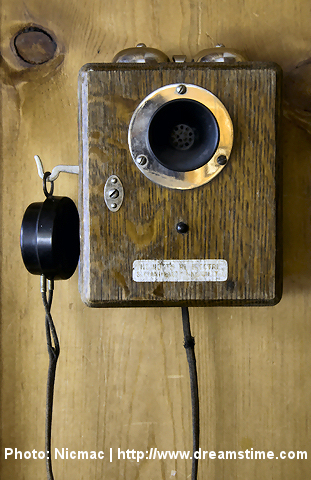Past Entry of Zippy's Telecom Blog
More Previous Columns
January 14, 2011
 Who Really Invented the Telephone? (Introduction)
Who Really Invented the Telephone? (Introduction)
Surely all readers are familiar with the epic story of Alexander Graham Bell (1862-1939) and his faithful assistant Watson (all faithful assistants are named Watson—just ask Sherlock Holmes). Every student in every elementary school since the 1870s has heard the brief, exciting tale of the acid that spilled onto Bell’s clothes (an exciting fiction added to the story later) and the famous line “Mr. Watson—come here—I want to see you,” a (genuine) utterance of such apparent force that some authors have noted how it seemingly compelled the first telephone into operation, strangely reminiscent of how the power of the Word spoken by the Deity in the book of Genesis could bring forth a new world. Indeed, the earlier invention of the telegraph also made its debut with equal and perhaps more literal Providential import, as the first message transmitted was, “What hath God wrought?”
Alas, gentle readers, the birth of the telephone is in reality a complex, controversial affair. Bell was not even originally developing a telephone, but rather a way of sending multiple telegraph signals over a single copper wire. It was only the accidental plucking of a metal reed in his apparatus that suggested how complex sounds such as the human voice could be transmitted over a wire.
Indeed, most of the 19th century’s backyard tinkerers and would-be Promethean innovators focused their inventive efforts on what appeared to be more practical, money-making ideas that could be grasped instantly by the public (and the inventor, for that matter). For example, the most common invention of the 19th century was the washing machine, with 1,676 U.S. patents issued between 1804 and 1873.
Still, a few daring and far-sighted inventors did begin to develop primitive versions of the telephone in the mid-1800s.
Many ideas for a telephone had come from an 1854 article in the magazine L’Illustration de Paris by the French telegraphist and investigator, M. Charles Bourseul (1829-1912). Bourseul had theorized how to actually transmit speech electrically. He wrote:
Suppose that a man speaks near a movable disc sufficiently flexible to lose none of the vibrations of the voice; that this disc alternately makes and breaks the currents from a battery: you may have at a distance another disc which will simultaneously execute the same vibrations... It is certain that, in a more or less distant future, speech will be transmitted by electricity. I have made experiments in this direction; they are delicate and demand time and patience, but the approximations obtained promise a favorable result.
Bourseul’s writings are remarkably prescient, but his one major theoretical error is assuming that the first diaphragm should “make or break” contact. Instead, it should simply vary the flow of electricity to the second diaphragm smoothly and continuously, matching the sound waves of the transmitted voice. Bourseul had picked up his incorrect “make and break” notion from the earlier (1837-8) work of Professor Charles Grafton Page (1882-1868), of Salem, Massachusetts, who had discovered that a needle or thin bar of iron, when placed in the hollow of a coil of insulated copper wire, would emit an audible “tick” when the current flowing through the coil suddenly was applied or interrupted. By magnetizing and demagnetizing the coil at short intervals of time using rapid pulses of current, the separate ticks followed each other fast enough to blend together into a continuous ringing tone. Page called sound generated in this way “galvanic music.” Each note’s pitch corresponded the rate of interruption of the current. Later a scientist named Wilhelm Wertheim demonstrated that the pitch of the note produced by the galvanic music process was the same as if one had struck the iron bar rapidly at one end. This proved that the act of magnetization sets up a longitudinal vibration in the bar, this owing to molecular disturbances in the iron mass caused by applying the magnetic field—the metal rod’s length varies as the magnetic field through it varies, and so this phenomenon was called magnetostriction.
But if you could just vary the pulses, couldn’t you create vibrations other than what the iron needle or bar was capable of on its own? This was the great discovery of Johann Philipp Reis, the first of several inventors of electrically-powered telephonic devices.
In the days ahead we will examine in succession a several people, each of whom performed an important role in the birth of the telephone. See the links below.
Who Really Invented the Telephone? Part 1 — Johann Philipp Reis (1834–1874)
Who Really Invented the Telephone? Part 2 — Innocenzo Manzetti (1826-1877)
